Waste360 Announces the Fourth Annual 40 Under 40 Awards Winners
NEW YORK, Jan. 30, 2019 (GLOBE NEWSWIRE) — Waste360, the leading information, event, commerce and education provider to the solid waste, recycling and organics communities, today unveiled its fourth annual 40 Under 40 awards list. The program recognizes inspiring and innovative professionals under the age of 40 whose work in the waste, recycling and organics industry has made a significant contribution to the industry. The winners are involved in every part of the waste and recycling industry, including haulers, municipalities, composters, recycling professionals, policymakers and product suppliers.
The 2019 40 Under 40 awards winners (in alphabetical order by winner) are:
“The 2019 class of Waste360 40 Under 40 awards winners is filled with today’s young innovators, thinkers and doers in the waste and recycling industry. Their diverse body of work has changed processes, policies and moved our industry forward,” said Mark Hickey, vice president of Waste360. “We received hundreds of inspiring nominations, which demonstrates that the future of our industry is bright. We look forward to celebrating with the winners at WasteExpo this spring.”
- Josh Bartlome, Executive Director and Chief Executive Officer, Southern Idaho Solid Waste
- Kelly Bray, Waste Reduction and Recycling Specialist, ReCollect Systems
- Meghan R. Butler, Director, Corporate Development, Recology Inc.
- Chris Cochran, Executive Director, ReFED
- Daniel M. Dodd, Chief Technology Officer, Sierra Energy
- Melissa Filiaggi, Manager, Recycling, Maryland Environmental Service
- Mark Grillo, Chief Operating Officer, Medical Waste Management, Inc.
- Rob Hallenbeck, Manager Corporate Venturing, Technology Scouting, Waste Management
- Caitlin Hitt, Senior Director of National Accounts, RiverRoad Waste Solutions, Inc./Rubicon Global
- John F. Howard III, Crew Supervisor, DeKalb County Sanitation
- Sheri Hummel, Area Safety Director, Waste Management, Northern California-Nevada
- Aaron Johnson, Area Vice President, Eastern Canada, Waste Management
- Kristin Kinder, Director of Research and Waste Stream Sustainability, Wastequip
- Jason Knowles, Director, Vendor Relations, Enevo
- Christopher Lockwood, Divisional Vice President, Waste Pro USA
- Ricardo Lopez, Materials Recovery Facility Manager, GreenWaste Recovery
- Naomi Lue, Zero Waste Supervisor, Castro Valley Sanitary District
- Zach Martin, Vice President of Sales, North America, Big Truck Rental
- Nathan Mayer, Director of Land Management Services, Solid Waste Authority of Palm Beach County
- Doug McDonald, Eastern Region Controller, Waste Connections
- Amanda Mejia, Government Affairs Manager, Athens Services
- Jeff Meyers, Chief Operating Officer, The Recycling Partnership
- Jennifer Wells Milner, State Recycling Coordinator, Mississippi Department of Environmental Quality
- James R. Mitchener, Marketing Manager, Waste Industries
- Daniel Moran, Senior Director Operations, Healthcare, Covanta Environmental Solutions
- Madelyn Morgan, Planner III, City of Austin, Austin Resource Recovery
- Jake Pack Jr., District Manager, WCA Waste Corporation
- Tania Ragland, Recycling Representative, Specialist in Food Recovery and Organics Diversion Programs, Republic Services
- Katie Raverty-Evans, Government Affairs Representative, Best Way Disposal
- Henry Retamal, Operations President, Wastequip
- Rebecca Rodriguez, Solid Waste Engineering Manager, Lee County Public Utilities
- Andrew Rumpke, East Area President, Rumpke Waste & Recycling
- Michelle A. Salas, President, Lady Green Miami Recycling Co.
- Meredith Sorensen, Strategic Communications Advisor, Harvest Energy Holdings, LLC
- Mike Stoeckigt, District Manager, State of Wisconsin, Advanced Disposal Services
- Tom Szaky, President and Chief Executive Officer, TerraCycle
- Travis Timmerman, National Accounts Manager, Mack Trucks, Inc.
- Srividhya Viswanathan, Senior Project Manager and Vice President, SCS Engineers
- Patrick Winters, Sales Manager, Winters Bros. Waste Systems
- Catherine (Kate) Wolff, President, CJD E-Cycling

 I have really been making it a goal of mine to be all around more conscious about our environment in the new year. I have always recycled, but I have been FAR from perfect & this year is my year of being ECO af. YOURS TOO, k?
I wrote a post about the
I have really been making it a goal of mine to be all around more conscious about our environment in the new year. I have always recycled, but I have been FAR from perfect & this year is my year of being ECO af. YOURS TOO, k?
I wrote a post about the  Let’s talk plastic for a minute. Plastic is one of the worst things for our environment, simply because we use plastic for EVERYTHING. Unfortunately, it takes tons of crude oil to produce + it takes 500 years to decompose. 500 YEARS. In the United States alone, 300 million TONS of plastic is produced, only 9% of which is recycled, leaving the rest to go straight to landfill. Then, when the plastics finally start to break down, they don’t even fully decompose. They break down into micro plastics, which run off with rain water into our streams + oceans. It is proven now that every living sea turtle has a tummy full of micro plastics. And that’s just the tip of the iceberg.
We’re ruining our environment to produce plastic, then we’re exposing ourselves to toxins from said plastic (I won’t even get into all the studies linking conditions like autism with plastic intake), then we’re disposing of this plastic + ruining our environment EVEN MORE. See where I’m going with this? It’s one big toxic circle — that we can’t recycle!!
Sounds daunting, huh? Like, how is it even possible to change this plastic problem just a little?!!
This is where I come in. I show my ecobabes how to go green, without spending a ton of money + without skipping a STEP in their daily routines. So here’s where we start:
Let’s talk plastic for a minute. Plastic is one of the worst things for our environment, simply because we use plastic for EVERYTHING. Unfortunately, it takes tons of crude oil to produce + it takes 500 years to decompose. 500 YEARS. In the United States alone, 300 million TONS of plastic is produced, only 9% of which is recycled, leaving the rest to go straight to landfill. Then, when the plastics finally start to break down, they don’t even fully decompose. They break down into micro plastics, which run off with rain water into our streams + oceans. It is proven now that every living sea turtle has a tummy full of micro plastics. And that’s just the tip of the iceberg.
We’re ruining our environment to produce plastic, then we’re exposing ourselves to toxins from said plastic (I won’t even get into all the studies linking conditions like autism with plastic intake), then we’re disposing of this plastic + ruining our environment EVEN MORE. See where I’m going with this? It’s one big toxic circle — that we can’t recycle!!
Sounds daunting, huh? Like, how is it even possible to change this plastic problem just a little?!!
This is where I come in. I show my ecobabes how to go green, without spending a ton of money + without skipping a STEP in their daily routines. So here’s where we start:
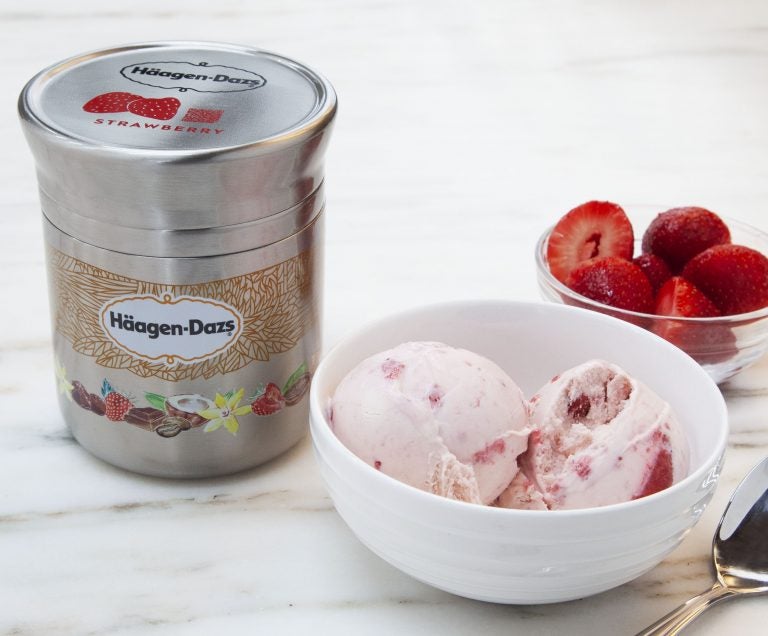
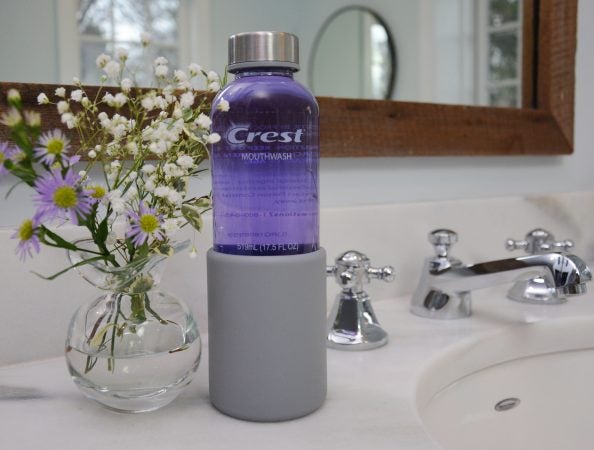
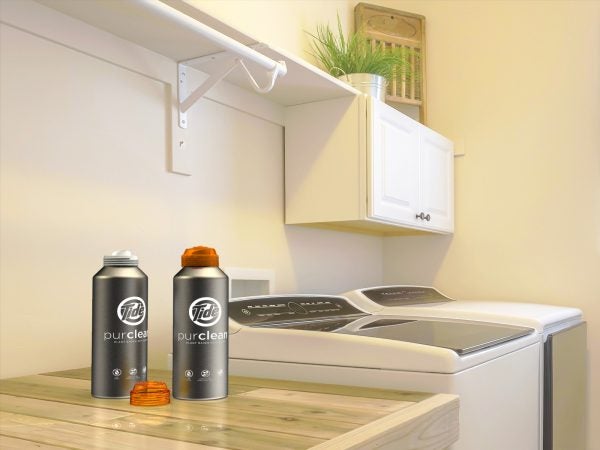
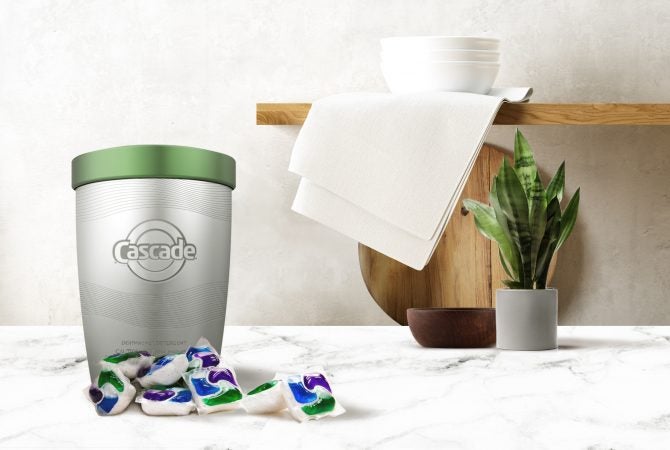
 Participants in Optometry Giving Sight’s 2018 World Sight Day Challenge form a giant “floater.”
Participants in Optometry Giving Sight’s 2018 World Sight Day Challenge form a giant “floater.”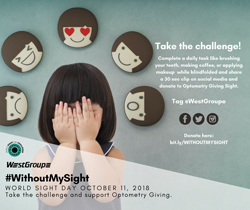 This World Sight Day Challenge ad from WestGroupe calls attention to the
importance of vision.
This World Sight Day Challenge ad from WestGroupe calls attention to the
importance of vision.